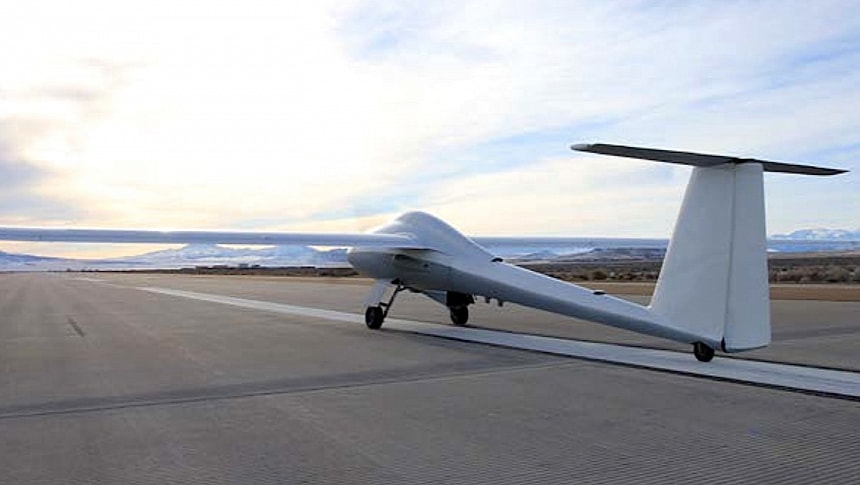Military drones are certainly impressive feats of engineering, as they allow their operators to keep an eye on the enemy or even strike its capabilities from a safe distance. But many of them come with a major disadvantage: they are very expensive to make and operate.
The quadcopters the likes of which are currently being used in the war in Ukraine for reconnaissance and strike purposes, most of them of the commercial variety, seem to be perfectly suited for the task at hand, and with an average cost of $2,000, they are not that expensive.
But when it comes to long-range drones that can be used to "conquer the tyranny of distance," as the U.S. Air Force likes to say, things change significantly. Depending on the type of drone and its capabilities, the cost of such a thing could reach as high as $131 million for the RQ-4 Global Hawk.
So, if the U.S. is to keep an eye on hot regions of the world such as the Pacific and not go bankrupt in doing so, it needs a very capable yet cheap platform. One it seems to have found in the so-called Unmanned Long-endurance Tactical Reconnaissance Aircraft (ULTRA).
ULTRA is the work of the Air Force Research Laboratory (AFRL) Center for Rapid Innovation (CRI) and private contractor Dzyne Technologies, and it was born as a non-descript commercial sport glider.
The aircraft, which initially needed a pilot to be able to fly, was converted into a "military hardened unmanned air vehicle." The conversion did not require intensive research and expensive parts and was done using solely commercial off-the-shelf components.
The project is at the time of writing very hush-hush, so we don't know exactly what was done to the aircraft. The limited details we have on it do point to it carrying an assortment of lower-cost electro-optical, infrared, and radiofrequency sensors which contribute to saving cost as well.
In this case lower-cost does not necessarily mean lower quality. The USAF opted to go down this path because the ULTRA is not supposed to fly at altitudes that require much more potent gear - it can only reach 25,000 feet (7,600 meters).
The drone, which can be controlled via a point-and-click system or by means of satellites, is advertised as being able to carry as much as 400 pounds (180 kg) of payload, and it should stay airborne for as much as 80 hours.
The military branch calls the ULTRA an ISR truck because the thing is reconfigurable and can serve a variety of purposes.
We don't know the exact cost of one of these things, but by repurposing an existing platform, using available hardware, and relying on existing manufacturing and supply channels, the USAF is confident the ULTRA is an "economical option when multiple aircraft systems need to be purchased to cover larger areas of interest."
It's unclear if and when the drone will begin operations, but we understand the platform is already proven with the Department of Defense.
But when it comes to long-range drones that can be used to "conquer the tyranny of distance," as the U.S. Air Force likes to say, things change significantly. Depending on the type of drone and its capabilities, the cost of such a thing could reach as high as $131 million for the RQ-4 Global Hawk.
So, if the U.S. is to keep an eye on hot regions of the world such as the Pacific and not go bankrupt in doing so, it needs a very capable yet cheap platform. One it seems to have found in the so-called Unmanned Long-endurance Tactical Reconnaissance Aircraft (ULTRA).
ULTRA is the work of the Air Force Research Laboratory (AFRL) Center for Rapid Innovation (CRI) and private contractor Dzyne Technologies, and it was born as a non-descript commercial sport glider.
The aircraft, which initially needed a pilot to be able to fly, was converted into a "military hardened unmanned air vehicle." The conversion did not require intensive research and expensive parts and was done using solely commercial off-the-shelf components.
The project is at the time of writing very hush-hush, so we don't know exactly what was done to the aircraft. The limited details we have on it do point to it carrying an assortment of lower-cost electro-optical, infrared, and radiofrequency sensors which contribute to saving cost as well.
In this case lower-cost does not necessarily mean lower quality. The USAF opted to go down this path because the ULTRA is not supposed to fly at altitudes that require much more potent gear - it can only reach 25,000 feet (7,600 meters).
The drone, which can be controlled via a point-and-click system or by means of satellites, is advertised as being able to carry as much as 400 pounds (180 kg) of payload, and it should stay airborne for as much as 80 hours.
The military branch calls the ULTRA an ISR truck because the thing is reconfigurable and can serve a variety of purposes.
We don't know the exact cost of one of these things, but by repurposing an existing platform, using available hardware, and relying on existing manufacturing and supply channels, the USAF is confident the ULTRA is an "economical option when multiple aircraft systems need to be purchased to cover larger areas of interest."
It's unclear if and when the drone will begin operations, but we understand the platform is already proven with the Department of Defense.






